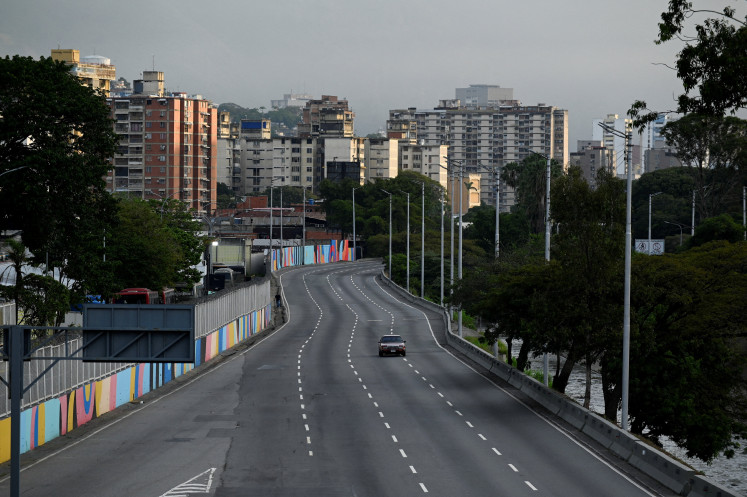Popular Reads
Top Results
Can't find what you're looking for?
View all search resultsPopular Reads
Top Results
Can't find what you're looking for?
View all search resultsBali is reaching saturation as tourist hub
The small island of Bali is predicted to reach saturation point, when it will no longer be able to accommodate more visitors due to its limited carrying capacity, resources and space
Change text size
Gift Premium Articles
to Anyone
T
he small island of Bali is predicted to reach saturation point, when it will no longer be able to accommodate more visitors due to its limited carrying capacity, resources and space.
I Nyoman Sukma Arida, a lecturer at Udayana University's School of Tourism, said Bali currently had to carry the heavy burden of various development projects, along with rapid modernization in people's lives.
'There have been crucial changes in Balinese culture and the lives of its people due to the flood of tourists and tourism development,' Arida said.
Bali is becoming crowded, with a population exceeding 4 million, as well as the huge influx of 4 million foreign tourists and around 6 million local visitors vacationing on the island each year.
'Massive exploitation of water and food resources is taking place,' he said.
A study revealed that one occupied hotel room in Badung regency, the island's richest regency, required 1,500 liters of water per day, far above the average per capita demand for clean water of only 120 liters per day.
The Bali Hotel Association recently revealed its member hotels needed 50,000 cubic meters of clean water every day.
Population and tourism growth has also affected the island's agricultural areas, which are vanishing to make way for various residential and tourism developments.
Arida said there were some proposals to find solutions to Bali's social, economic, cultural and environmental problems.
'Bali has proposed the implementation of a special autonomous government system, in which the province would receive a special funding allocation from the central government to manage its government and its resources,' he said.
'But representatives of the Balinese government and society failed to convince the central government of the urgency to implement special regional autonomy, which was expected to curb uncontrolled development programs and to preserve the island's culture and nature.'
The second proposal was the implementation of a moratorium on tourism development projects in south Bali.
'This also failed since the regional autonomy system allows regional administrations to enforce their own policies. As a result, tourist accommodations continue to grow very rapidly in southern Bali, especially in Denpasar and Kuta.'
Another feasible solution was designating Bali as a center for tourist transit, in which tourists would be expected to continue their trips to areas outside Bali.
The Bali and Beyond tourism concept, introduced by the Tourism and Creative Industry Ministry and stakeholders in tourism, is considered a forward-looking effort to evenly distribute tourists to places beyond Bali.
Tourism institutions must also produce skilled and qualified professionals and workers in the tourist industry.
I Ketut Ardana, chairman of the Bali branch of the Association of Indonesian Tour and Travel Agencies (Asita), said that the present Bali and Beyond tourism package would not only benefit Bali but also other destinations in Indonesia, such as East Java, Yogyakarta, West and East Nusa Tenggara, Sulawesi and Papua.
In Kuta, a new tourism center has already been established to promote Bali and Beyond tourism.
'At present, only nine destinations have opened their outlets in the center, including West Java, Central Java, Yogyakarta, Banten and Lampung. We have to encourage other provinces to participate,' said Ardana.
He further said tourists were currently spending less and less time in Bali.
This analysis of current tourist behavior was supported by data from Bali Tourism Agency.
In 1968, the number of tourists visiting Bali only reached 10,997 people. This had increased to 170,505 in 1983. However, the average length of stay for most tourists at that time was between five and six days.
In 2013, 3.2 million foreign tourists arrived on the island and stayed for only two to three days per visit.










